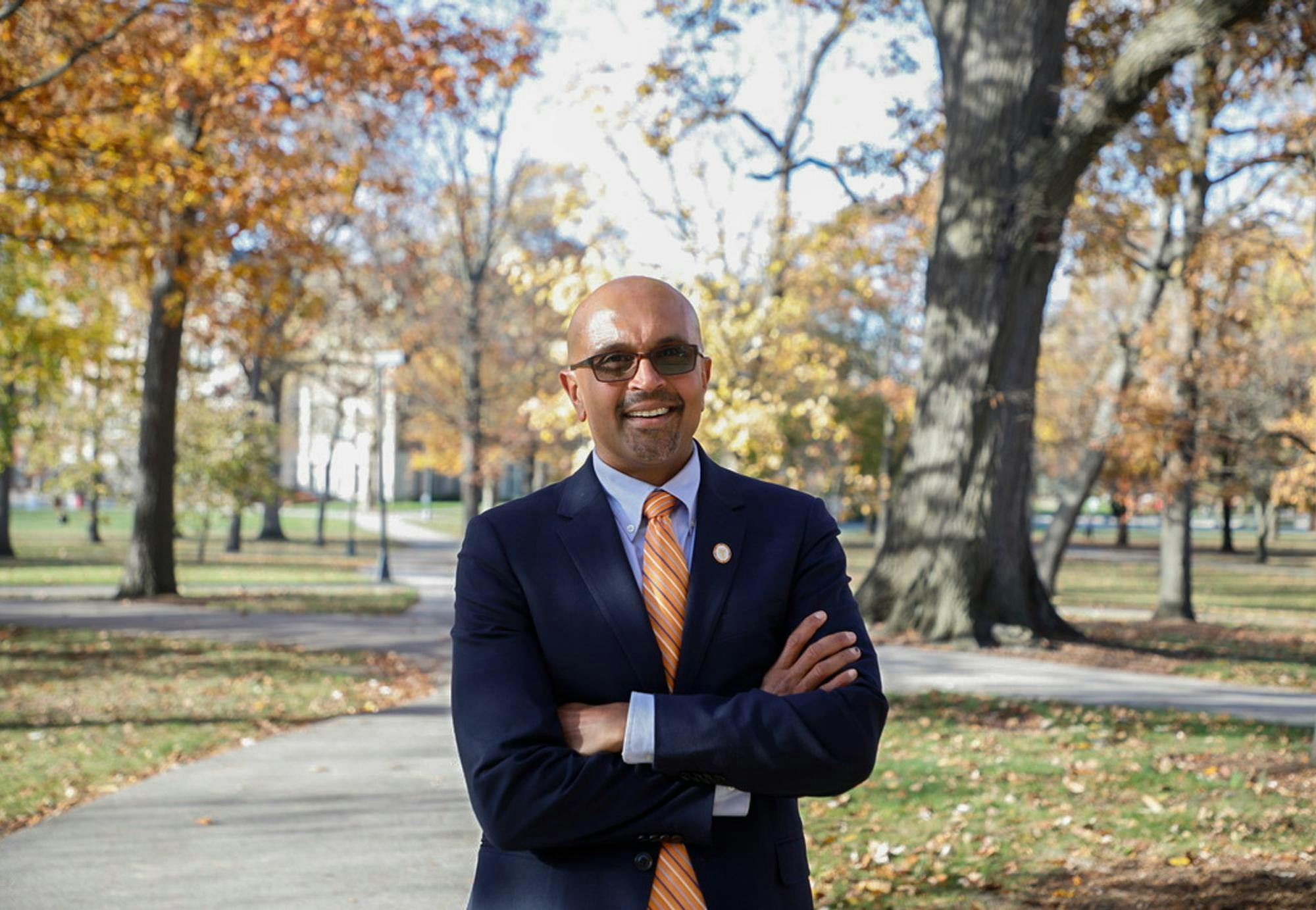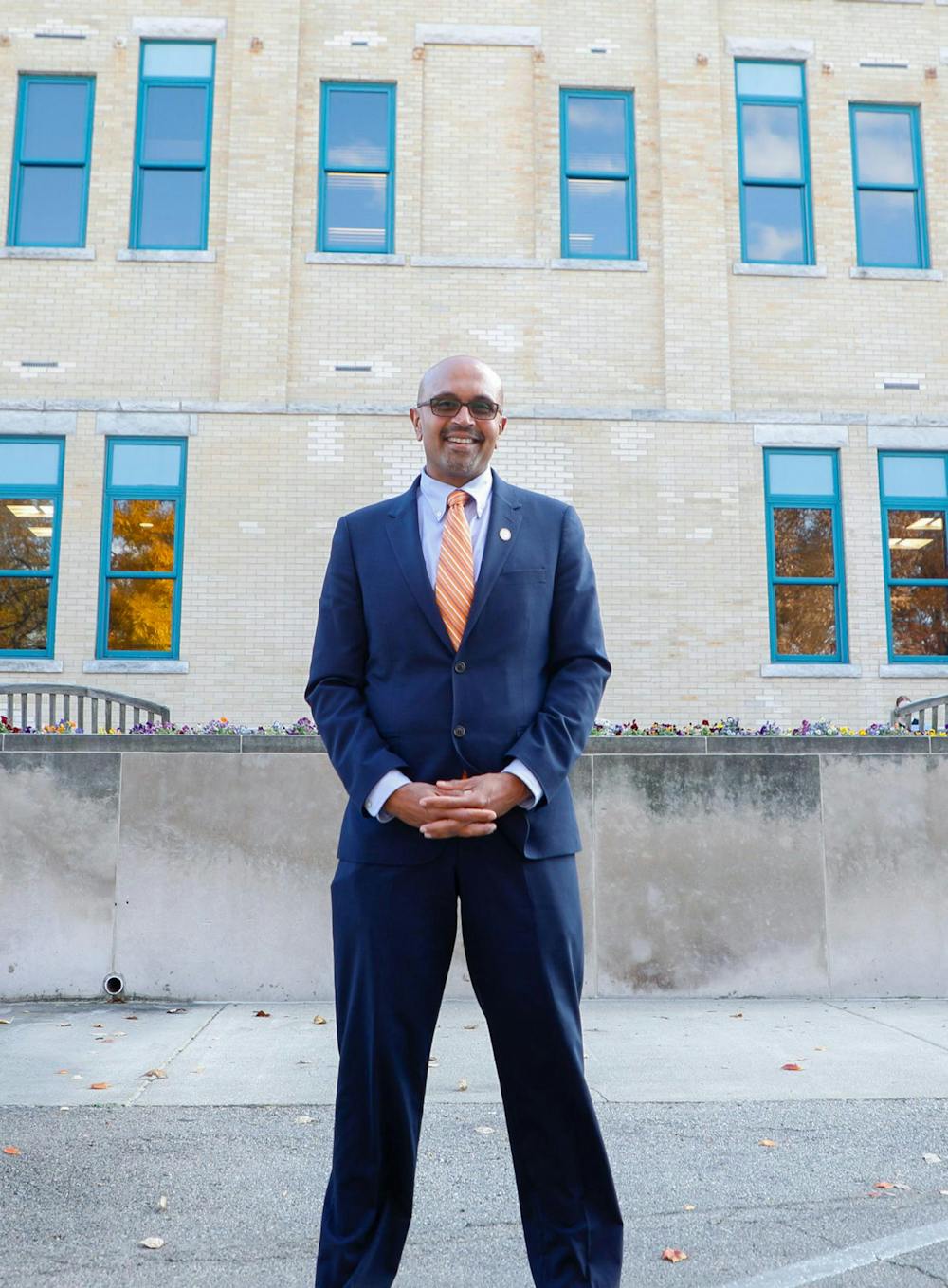Growing up riding subways and buses in Queens, New York, Anand Marri watched adults in fancy suits making their way into Manhattan to the law offices, prepared to make changes in the world and make lots of money doing it.
Anand Marri planned to be one of them.
He came to the United States when he was 9 years old from Hyderabad, India. He didn’t speak English, his parents owned cologne and fragrance stories in the area malls.
His parents put him through English as a second language (ESL) classes as soon as they came to the States and enrolled him in a private school– ensuring he received the best education he could get compared to the disadvantaged public schools Marri’s family members were exposed to.
“My parents worked for seven days a week in the store,” Marri said. “I saw that they provided us an opportunity by sacrificing, by sending us to campus and will pay the tuition. And I was lucky enough to get all those opportunities but I saw a lot of our kids in the neighborhood not having opportunities.”
Marri is a first-generation student who attended Bowdoin College, a small liberal arts university in Maine. He attended on a full-ride scholarship, playing two sports and admittedly “partied a little too much his first semester.”
Marri didn’t have cable growing up– but he did have three newspapers arrive at his home daily. The New York Times, The Daily News and The New York Post. He read them “cover to cover” as a kid.
“My parents instilled to me the joy of reading,” Marri said, “ I was more aware of the world because I got to read the papers all the time.”
This all mounted to one random moment in his sophomore year required credit class: Education 101 with Professor Penny Martin.
The first question Professor Martin asked the class: Who is Lamar Alexander?
Marri raised his hand, the only one in the room to do so, and identified the then-Secretary of Education.
“I was the only one in the room who knew that, and we connected from there on,” Marri said. “She took me under her wing.”
The only reason he knew it? He read it in a newspaper in his home in Queens.
From that point on, Marri knew he wanted to work in education, despite being a Political Science and Government major. Conversations, advice and mentorship from Martin led Marri to Stanford, where Marri received his master’s degree.
Leaving Stanford with a master’s degree and teaching license, the opportunities were wide open for Marri. He was able to go to any school district he wanted simply because he had graduated from Stanford, he said.
But, he chose a low-income district to teach in.
“I hit the education lottery. I was a first-generation college kid, got to go to Bowdin – a place of privilege – as a scholarship kid the whole time,” Marri said, “ I wanted to focus on helping students that don't traditionally have access to [education] get on that path.”

Marri taught AP US History, AP government and AP economics, motivated by the want to teach students to become engaged citizens in American democracy, he said.
Once he eventually left his position to get his Ph.D., he researched ways to support non-traditional students – first-generation students and students in low-income areas – to find ways into higher education.
He was drawn to Ball State University when he learned of the merger Ball State made with Muncie Community Schools.
“There is no other place in the country where the state legislature said the school district is going to work very closely with the university and put governing the school board with the university,” Marri said “ I said, ‘This is somewhere unique,’ and I also wanted to go to a place where schools of education are valued.”
Since arriving in Muncie, Marri has put a priority on immersing himself in the community. He volunteers at Second Harvest Food Bank, worked on the campaign committee for the new YMCA and actively serves on the board for the Boys and Girls Club.
“It's important that our committee members see the university as a partner and as a catalyst for economic growth for not just the university but for all of the community,” Marri said. “We're looking at ways to partner because if the students at Muncie Community Schools are not doing well, that means we're not really doing that well either.”
Marri started at Ball State as dean of Teachers College in 2020, creating large changes in a few short years.
“Colleges of education and teachers colleges all across the country are experiencing declining enrollment,” Geoffrey Mearns, Ball State University president, said. “Our teachers college, because of his advocacy and the strong work of our faculty, staff and graduates associated with teachers college, is bucking that trend and enrollment is growing modestly.”
Marri worked closely with Kendra Lowery, associate dean for equity and engagement.
“Provost Marri was a visionary. He was collaborative. He was very accessible and approachable. He would allow people to dream and to brainstorm,” Lowery said.
Marri took on the role of interim provost following Susana Rivera-Mills' departure for Aurora University in March.
Marri described the transition from teacher to Dean to Provost by ways of navigating a forest.
As a faculty member trying to get tenured, make scholarships and build community, you are focused on one tree in the forest that is higher education, Marri said. When you become a Dean, you start to focus on a couple dozen trees. When you become Provost- you are overseeing the whole forest.
“Now I get to think about half of the university budget [in] Academic Affairs. We have over 1200 faculty that work in academic affairs and a lot more staff,” Marri said. “And so now I have to figure out how to think about this from a strategic viewpoint in partnering with other parts of the university with our same priorities.”
Marri said he is focusing on three goals in his new role: student success, faculty success, and changing the budget model.
In terms of student success, Marri wants students from all backgrounds to succeed but places an emphasis on first-generation and low-income students.
At Ball State, one in three students are first generation, according to Ball State Student Affairs, and 80 percent of students at Ball State qualify for financial aid, according to Ball State Admissions.
“Our students here don't have the same path that I had at Bowdin, my life was much easier at Bowdoin because we had a lot of resources, we don't have that,” Marri said. “So how do you work within that system to provide the same excellent undergraduate experiences and graduate school experiences for our students to get into the path of the middle class and beyond?”
Marri’s student-centered approach to the position aligns with the responsibilities that Lowery feels administrators have to the university.
Marri echoed the sentiment, expressing he has yet to deny any student a meeting since he took the position and has no intention to. Or, they are welcome to join Marri as he hits the ground running on campus each morning at 5 a.m..
Editor-in-chief Daniel Kehn contributed to this story.
Contact Olivia Ground with comments at olivia.ground@bsu.edu or on Twitter @liv_ground_25.





